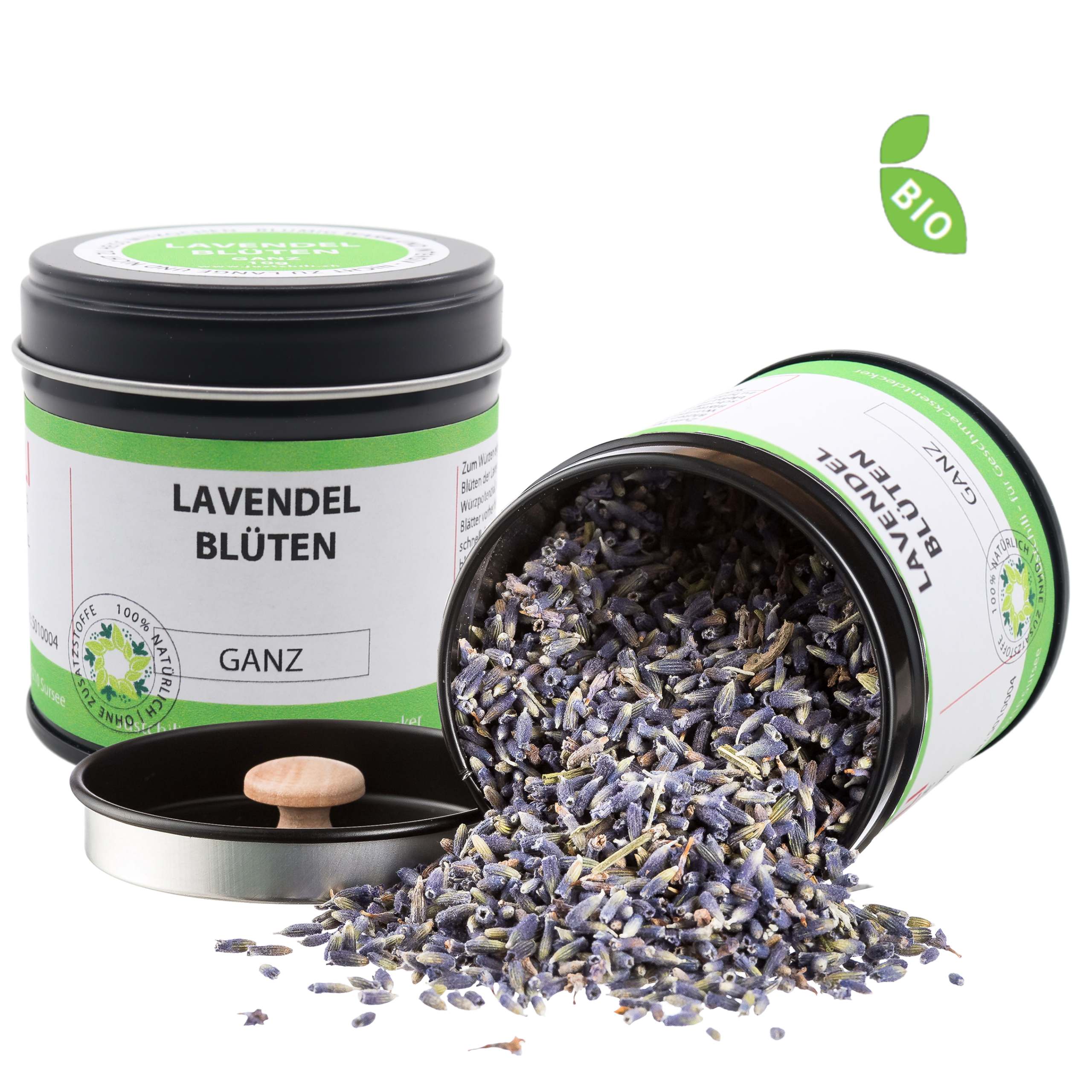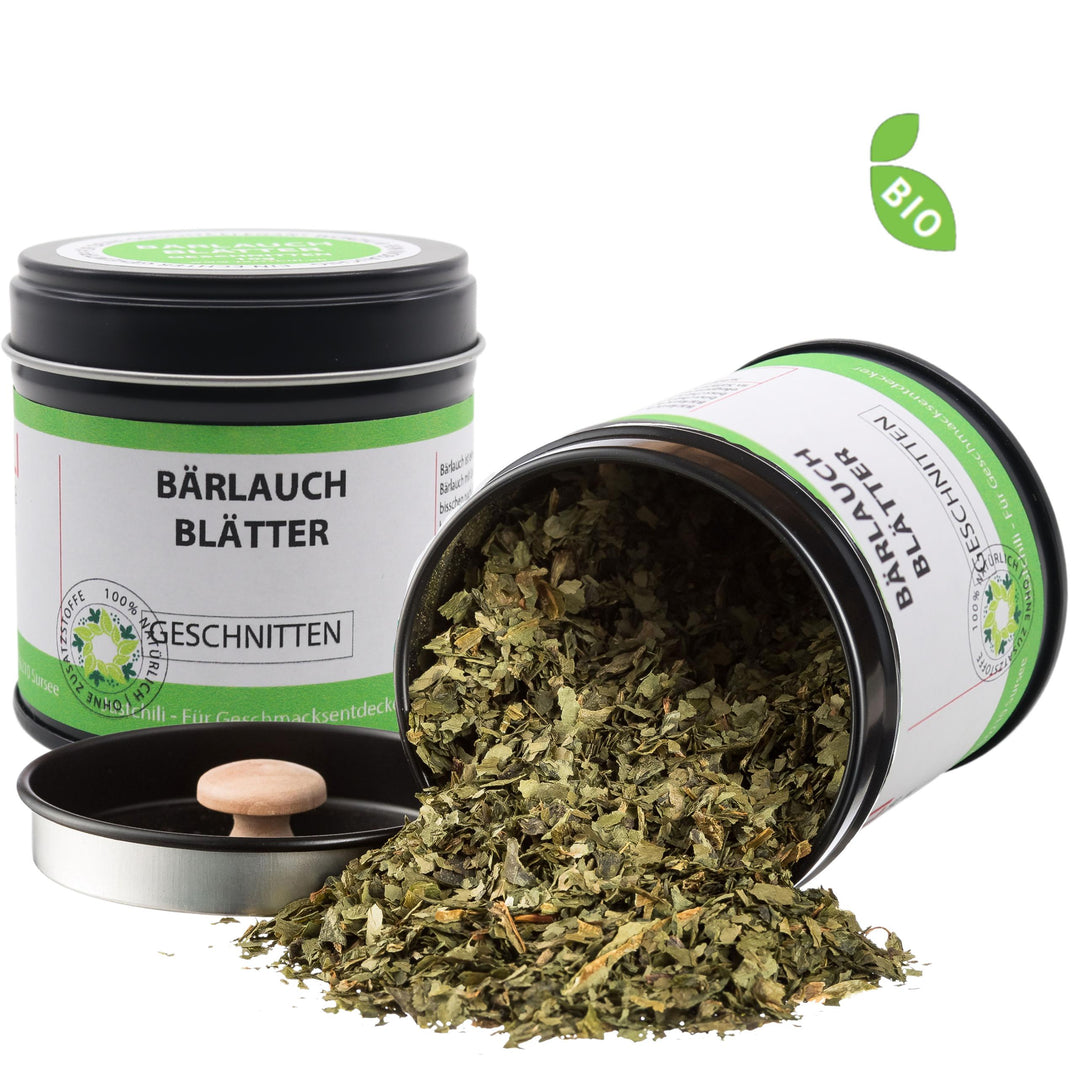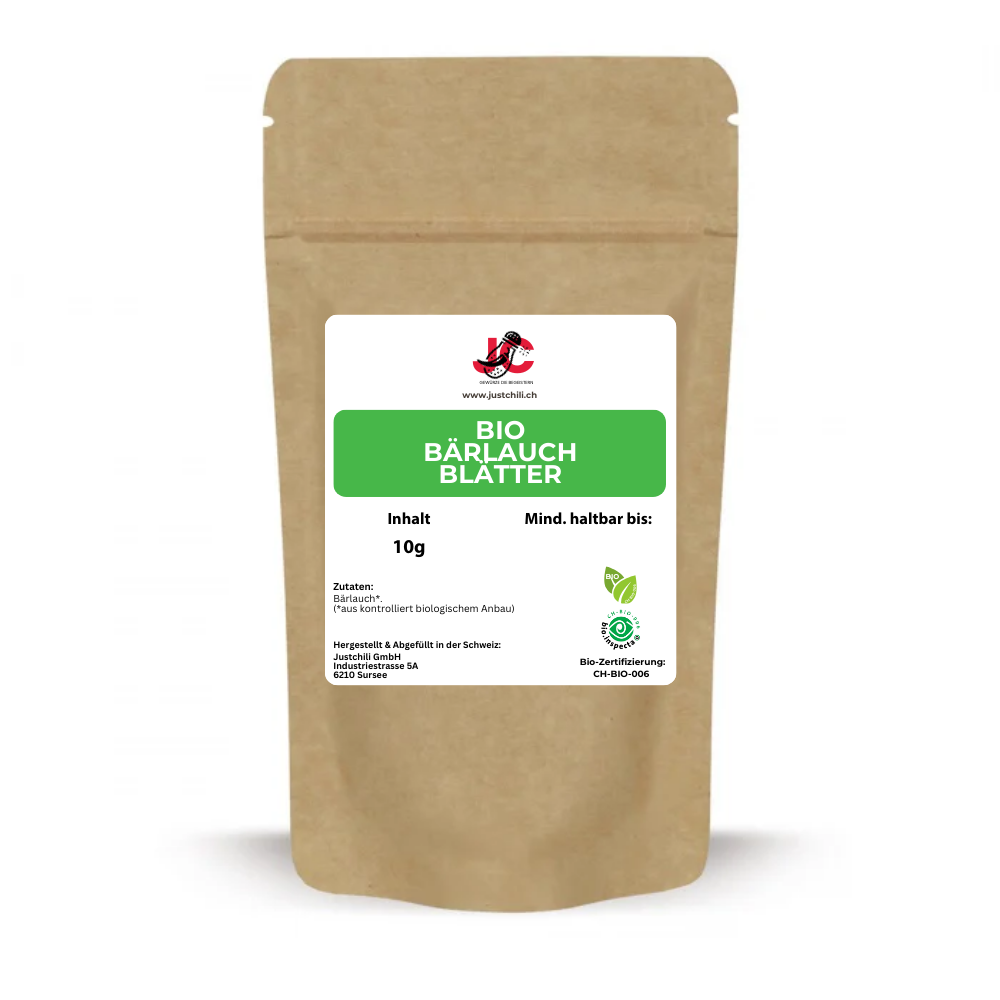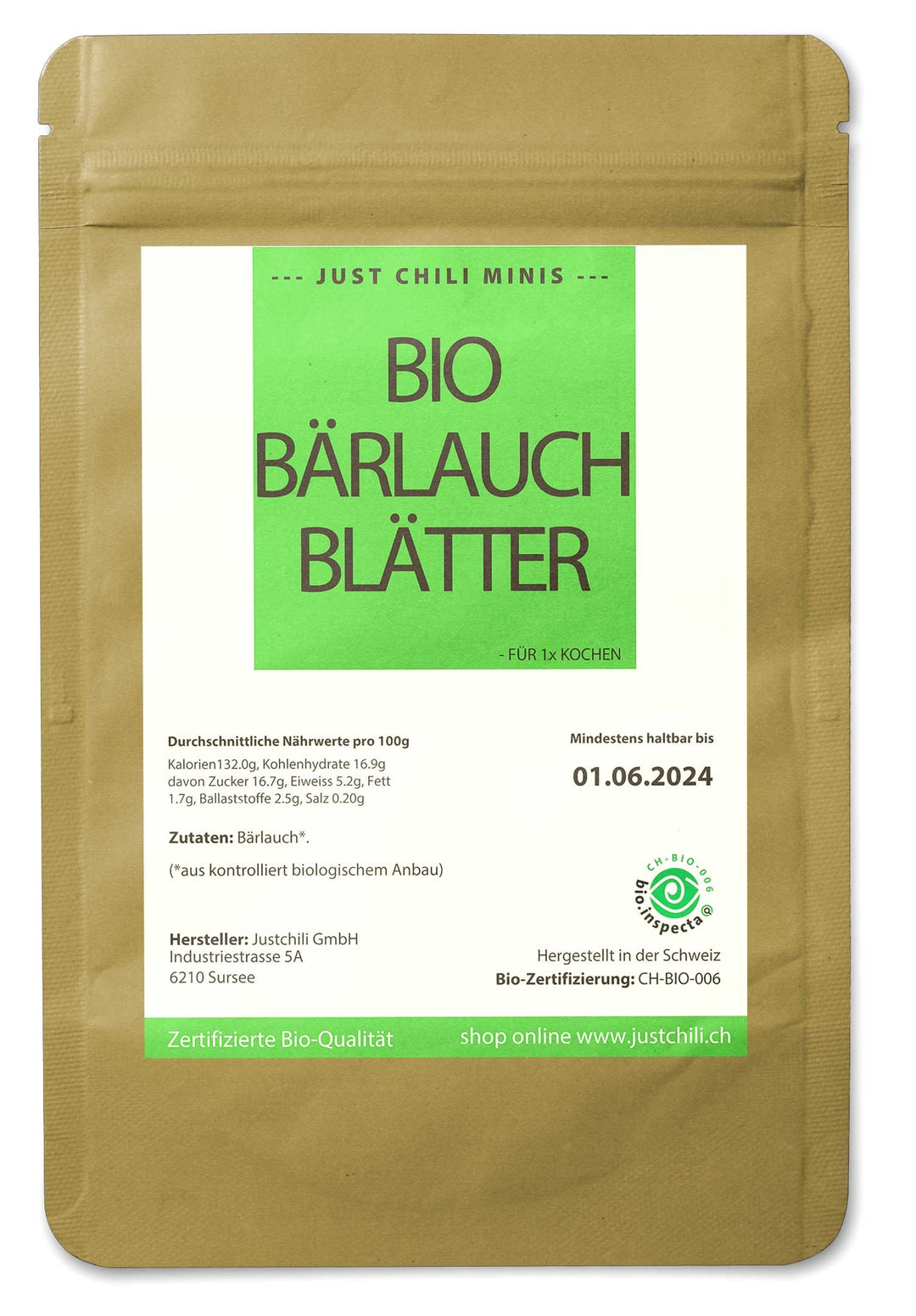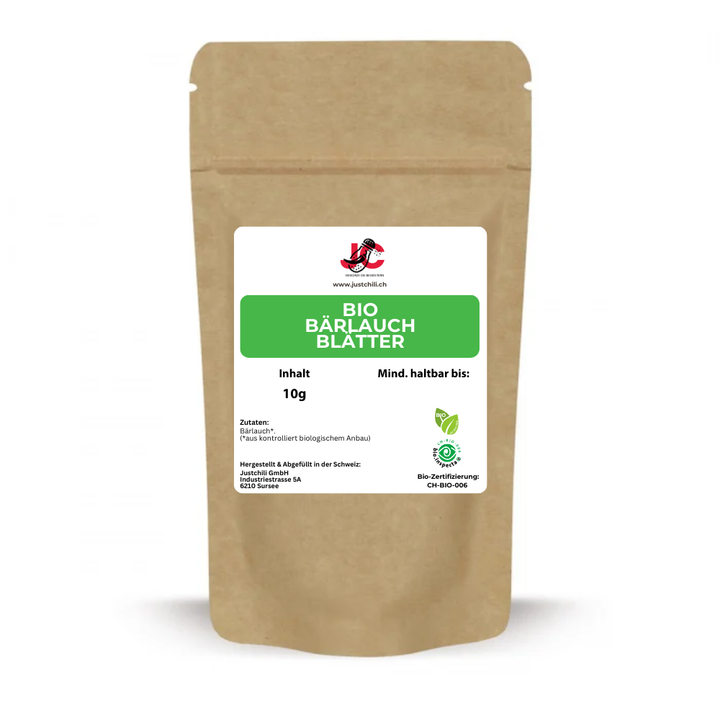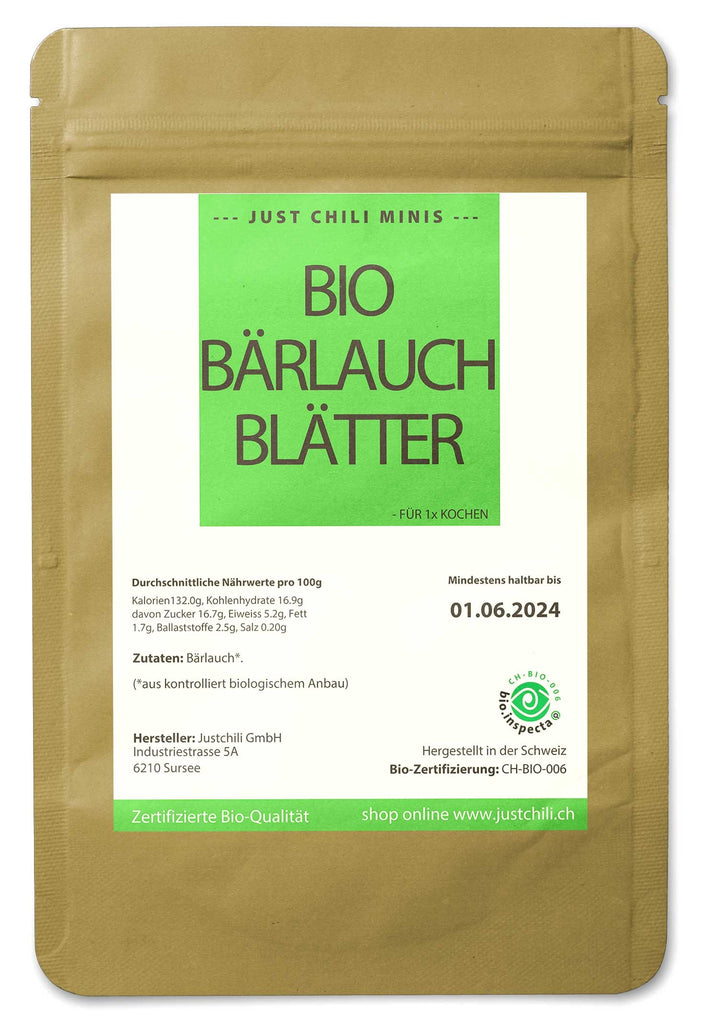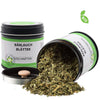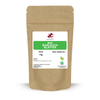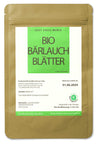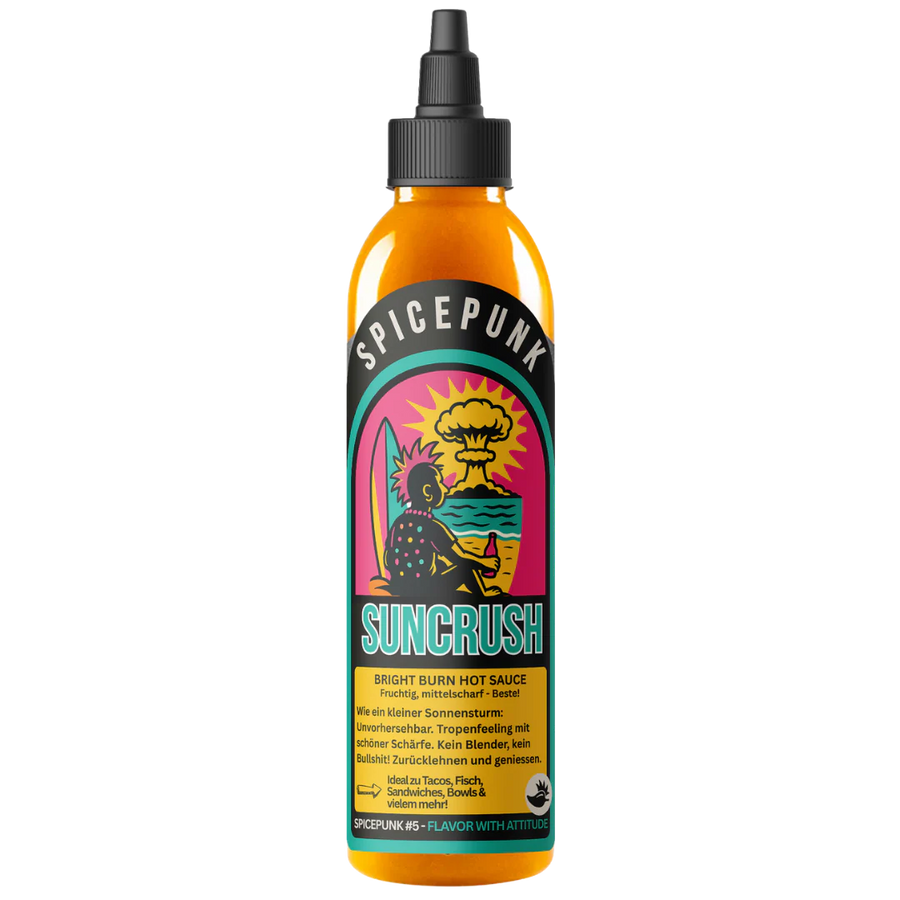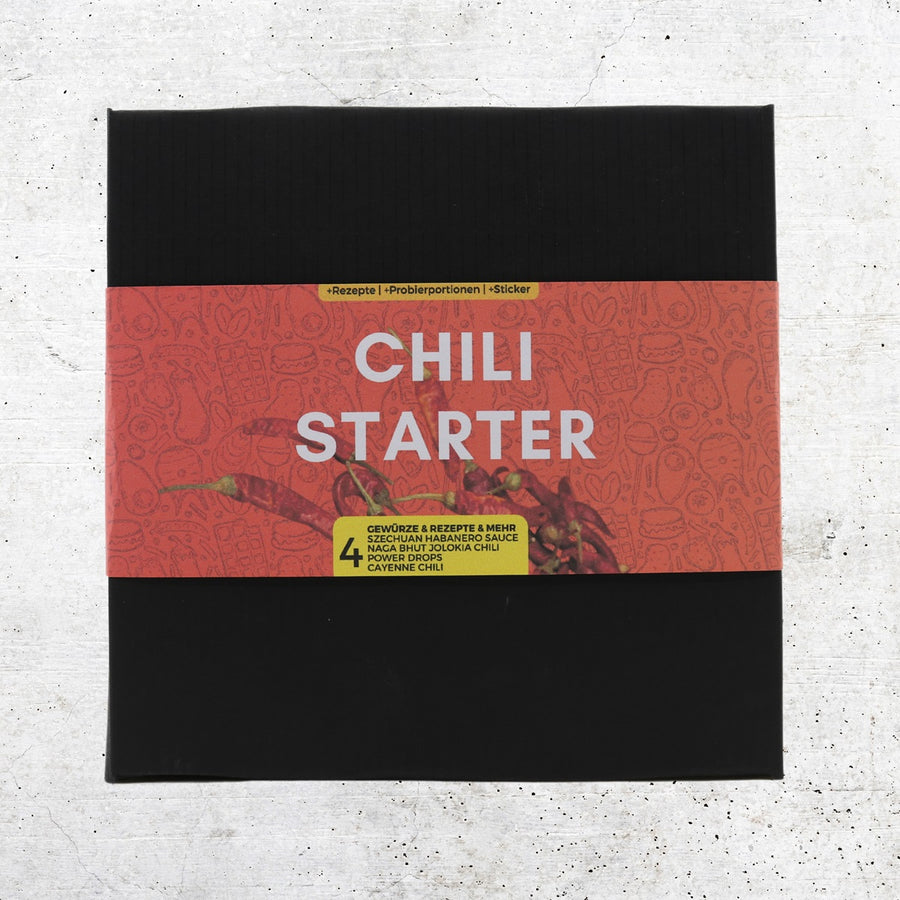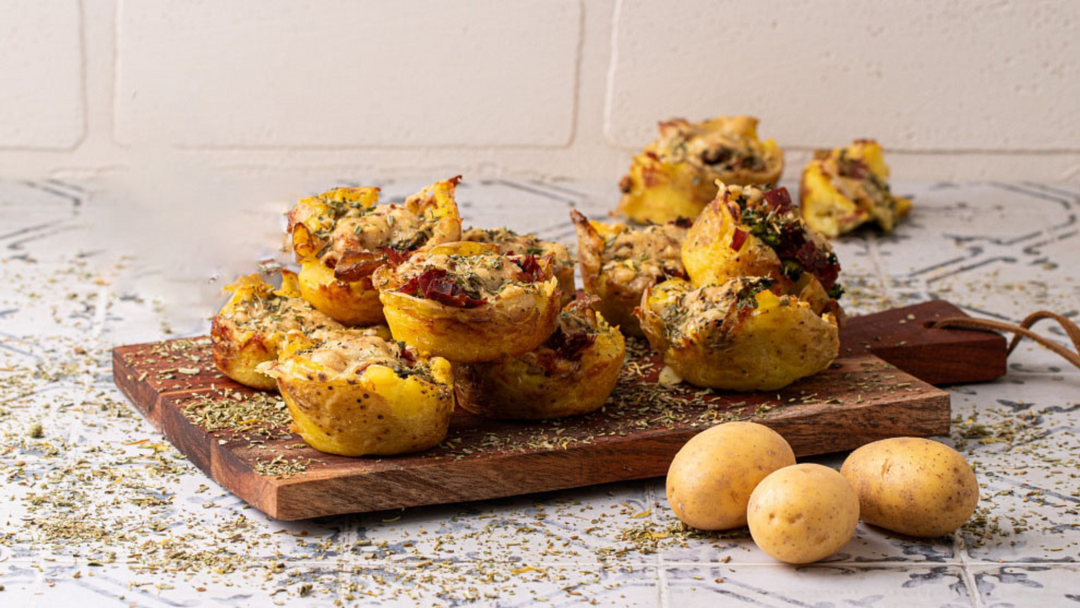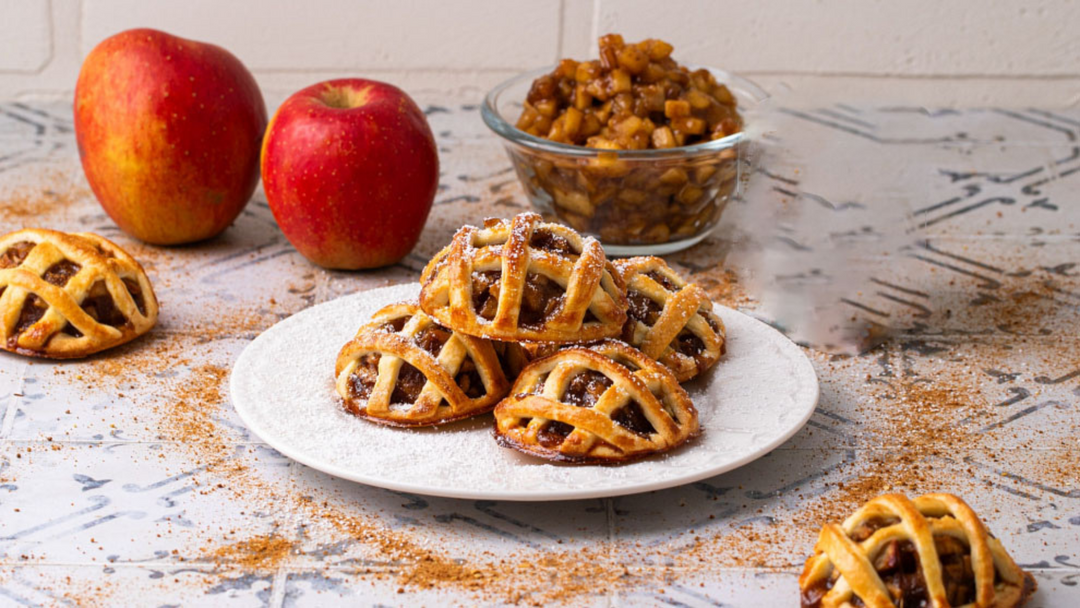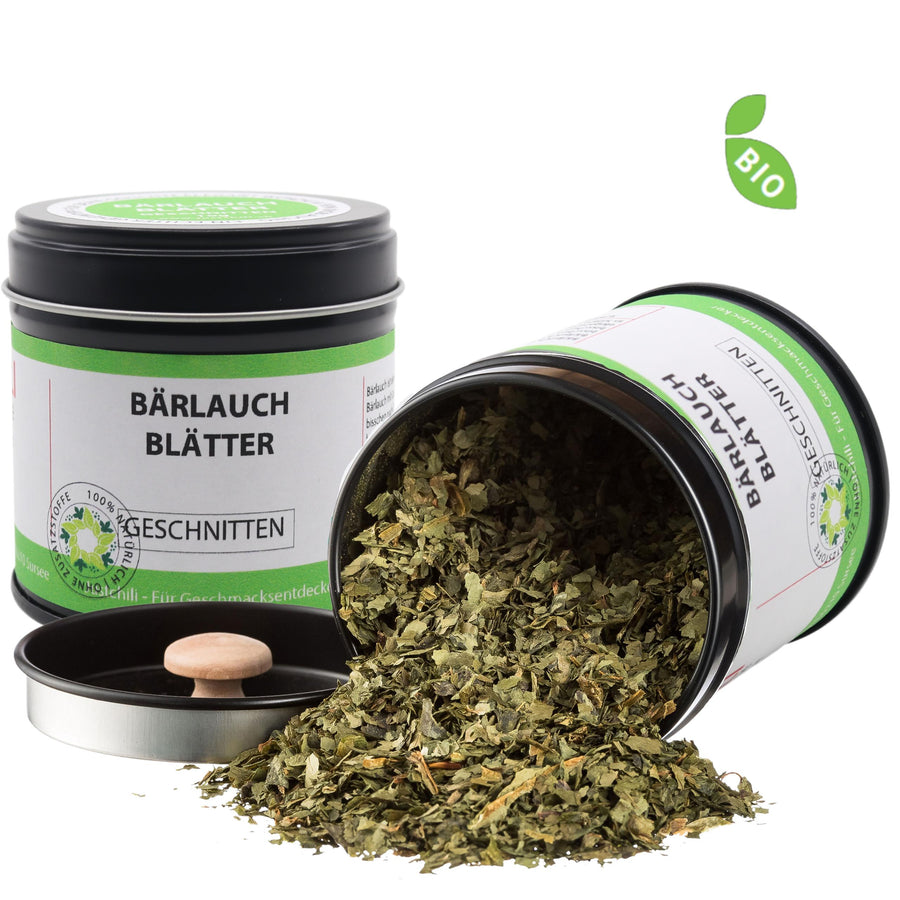Weil gutes Essen happy macht.
Damit Du immer etwas Neues erlebst
Damit jedes Gericht gelingt & schmeckt
100 % natürlich & ohne Zusatzstoffe
When spring arrives, many people walking in the forest notice an unusual smell. Doesn't it smell like...? Yes, it smells like garlic. And the reason is called Bärlach and it appears in one place very early in the year in a company of thousands. Our ancestors therefore believed that it could have served as food for bears after their hibernation, where the berries could get the energy they needed and boost their metabolism. But enough of the legends and fairy tales, here is some information about our wild garlic.
AROMA AND TASTE
Not only do garlic and wild garlic have something in common from a botanical perspective, they are also not exactly far from each other in terms of taste. Responsible for this is the bulbous, garlicky-tasting compound allicin, which is only produced in both garlic and wild garlic when the leaf/tuber is injured and the inside of the cells comes into contact with oxygen. The uninjured plant contains alliin, which tastes completely different and is only converted through enzymatic processes. In addition to the sulfurous and slightly acrid aromas of wild garlic, the plant also has the typical leaf aromas that we know from lettuce or leeks. Because of its significantly lower allicin content, wild garlic is less strong and smells more grassy. Anyone who uses fresh wild garlic in high doses will find that, despite its generally mild aroma, it can develop a spiciness.
WHAT DOES WILD GARLIC GO WITH?
Wild garlic is great for seasoning fresh salads, gives vegetable and potato dishes a refreshing garlicky note and, when paired with fresh pasta, puts a smile on the face of even the most critical palate. But wild garlic almost always goes well with summer quark, which should be served as a dip in the evening, eggs, rice or white meat. If you don't like quark, you can also try cream cheese or goat cheese. And who smells like garlic after eating? That's right, nobody!
NICE TO KNOW:
Due to its high green content, wild garlic tastes grassy and fresh and therefore shares some aromas with the equally green herbs basil and oregano. Chives and onions are far more perfect partners in the concert of flavors if the conductor is willing to put in a little effort. The use of wild garlic is currently limited almost exclusively to Austria and southern Germany, although it can be found almost throughout Europe. Well-known dishes from these kitchens include wild garlic ravioli with a creamy filling, wild garlic dumplings and, last but not least, the highly recommended bread dumplings with wild garlic (butter).
WHAT DO I NEED TO CARE FOR WHEN USING IT IN THE KITCHEN?
Wild garlic should, if possible, be freshly prepared and consumed immediately. If you use the dried version, you have to increase the dosage significantly. To preserve the green color and the light aroma that comes with it, wild garlic should not be cooked or added just before serving - the volatile aromas disappear too quickly. In addition, wild garlic releases bitter and dull-tasting aromas at a temperature of around 60 degrees, which become increasingly prevalent at even higher temperatures. However, if you want the garlic taste to be even more subtle, you can blanch the herb very briefly. If possible, you should no longer use older leaves as they become increasingly hard in structure and taste less intense. The cleverest way to capture the wild garlic aroma is to insert it into tasteless oil - such as sunflower oil - which prevents oxidation by excluding oxygen and binds the aromas.
HOW DO I MAKE A WILD GARLIC PESTO?
The most classic of all pestos comes from Italy and is called 'pesto alla genovese'. It consists of chopped basil garlic, roasted pine nuts, a hard cheese (such as Parmesan or Pecorino) and the best olive oil. If you've already eaten this a hundred times, you might be longing for a change and that's where wild garlic comes into play. The garlic is replaced with wild garlic, otherwise the recipe remains the same. You can season with salt, pepper or lemon juice as desired. When preparing it in an electric chopper, you must ensure that the mixture must not get hot, as this could spoil the taste experience. Stored in clean jars and only removed with clean cutlery, the pesto will last for about 3 weeks in the refrigerator. If you always think of spaghetti when you hear pesto, you should know that pesto can also be eaten excellently as a spread or seasoned with soups and salads as well as pasta. But you can also marinate fish and meat with pesto. In any case, it's worth making it yourself, because conventional products from the supermarket can't come close to the taste experience. Go for it!
ATTENTION: RISK OF CONFUSION!
Just like when looking for mushrooms, there are important things to keep in mind when looking for wild garlic in the forest and fields. The wild garlic plant (Allium Ursinum) can be confused with two doppelgangers that resemble it: on the one hand, the beautiful lily of the valley and on the other hand with autumn crocus. The easiest way to differentiate reliably is through the sense of smell. To do this, the leaves must be gently rolled with your hands so that the plant substances come out. Wild garlic smells intensely garlic-like, a characteristic that the other two plants that occur both locally and temporally with wild garlic do not have. If you have your hands smelling of garlic after a long search and are not sure whether you are dealing with wild garlic again, you should be content with your haul and leave the questionable plant behind, true to the motto: Safety first!
HISTORY AND ORIGIN
Although wild garlic can be found in almost all forests in Europe, it is by no means eaten everywhere. The plant is noticeable to walkers by its intense smell of garlic, a detail that earned it the nickname 'Ramsen' in prehistoric language, which describes the foul smell of goats. It was anything but common for our ancestors to use wild garlic in the kitchen. Nevertheless, wild garlic was surprisingly often found in Stone Age pile-dwelling settlements near the Alps. Since wild garlic was eliminated as animal feed - animals produce milk that is inedible for humans after consumption - it can be assumed that people were already eating wild garlic 4,500 years ago - although not everywhere. However, wild garlic probably remained completely unknown to cooks and herbalists from ancient times.
Ingredients: wild garlic*.
*from controlled organic cultivation. Certification: CH-BIO-006
TOPSELLER & NEUHEITEN
View all
Wir geben alles für besten Geschmack
Warum Just Chili?
- 100 % natürliche Zutaten: Geniesse reine Aromen ohne künstliche Zusatzstoffe.
- Bio-zertifizierte Qualität: Unsere Gewürze stammen aus fairem und nachhaltigem Anbau.
- Vielfalt und Inspiration: Von klassischen Gewürzsets bis hin zu exotischen Chili-Produkten und Saucen bieten wir eine Palette, die jede Küche bereichert.
- Geschenkideen: Überrasche mit liebevoll zusammengestellten Gewürzgeschenksets.





